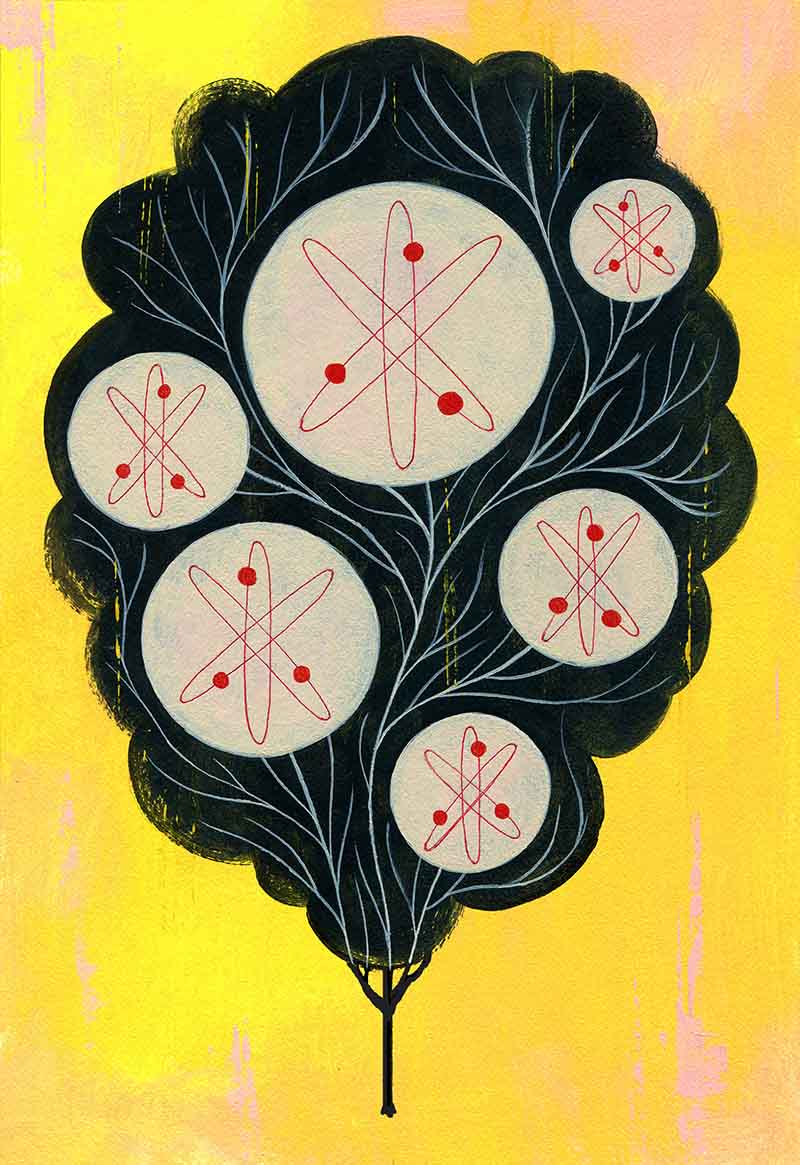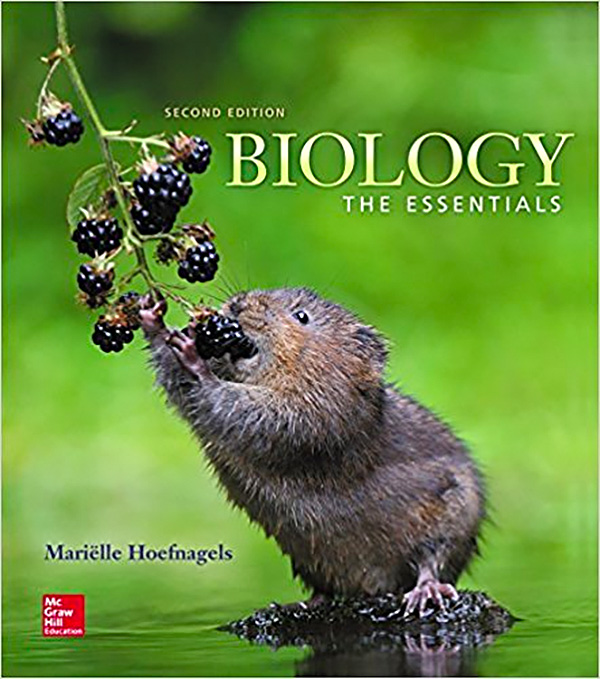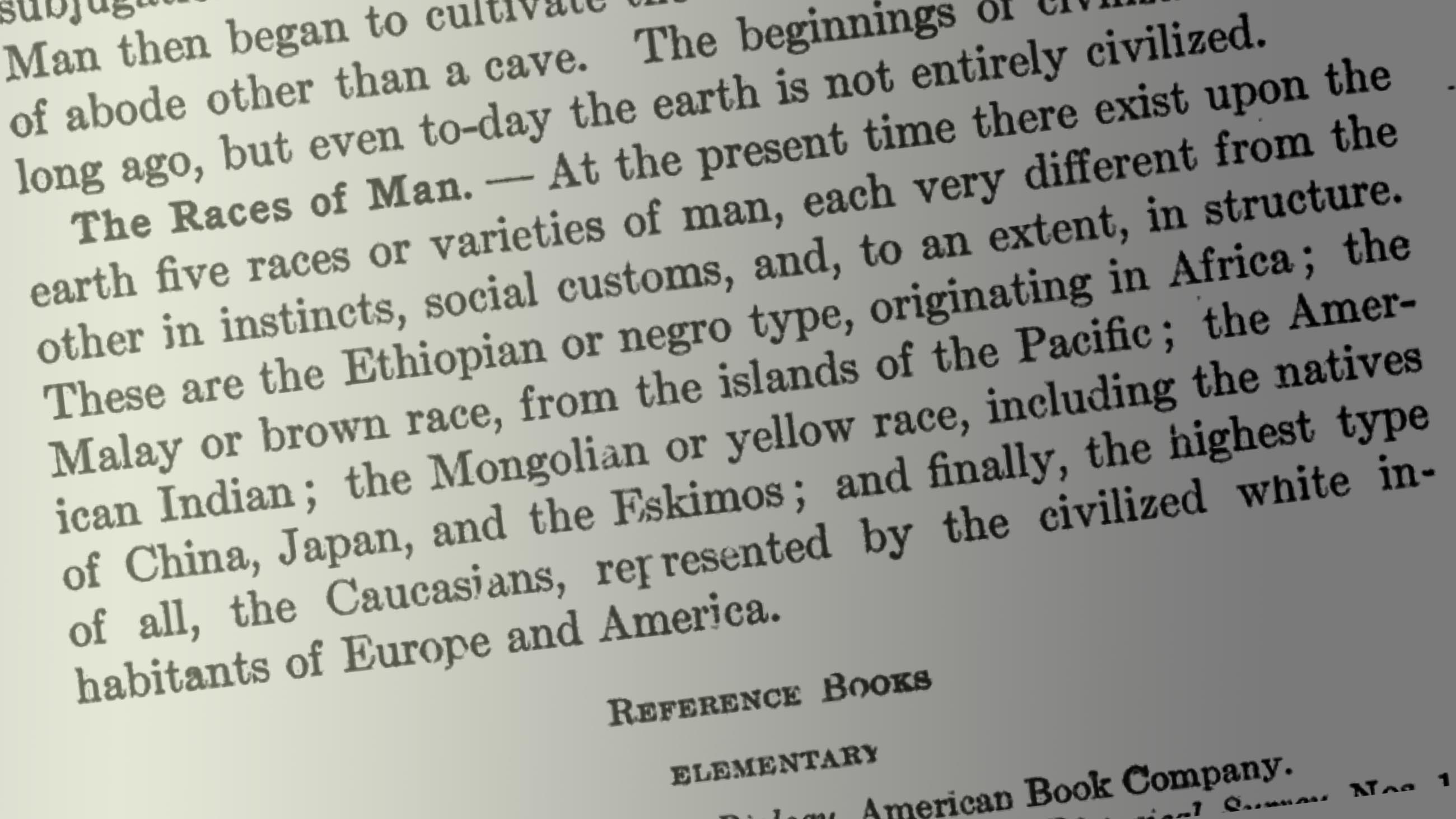Last spring, Paul Strode gave an unusual survey to his advanced biology students at Fairview High School in Boulder, Colorado. The first five questions were:

MATTERS OF FACT:
Exploring the culture of science.
1. Define as best you can: What is a racial group?
2. Define as best you can: What is an ethnic group?
3. Define as best you can: What is meant by the term genetic ancestry?
4. True or False: There is too much overlap between racial groups to use a single biological trait (like skin color) to distinguish one racial group from another.
5. True or False: When several traits are combined they can be used to distinguish one racial group from another.
The next day, Strode showed his students — all seniors — their aggregated results. On some questions, the students were mostly in agreement. More than 80 percent of them, for example, correctly marked Question 4 as “True.” But other topics were muddier, and on several questions — including #5 — the students split nearly 50-50. “They’re guessing,” Strode says. (For the record, the answer he says he was looking for on #5 was “False.”)
Strode’s exercise is an anomaly. Most American biology textbooks and curricula don’t discuss race at all — nor do they grapple with the biology of sexual orientation or gender, for that matter. To some, these omissions seem appropriate. Early 20th-century biology textbooks, after all, were replete with ignorant racial and gender stereotyping and classifications purporting to be scientific — and some even extolled the virtues of racial purity. It would be hard to find such discussions in today’s biology classrooms and supporting materials.
But to a growing number of academics, that’s a problem, and the omissions represent glaring intellectual lacunae — a sort of sanitized approach to biology that ignores the political and cultural veins that have historically run through it. After all, the history of racial, sexual, and gender classification is very much a story of scientific debate. And biological concepts — and misperceptions — continue to exert profound influence on national conversations about diversity and human difference.
With these realities in mind, some educators, scientists, and sociologists are working to bring such discussions back into American biology classrooms and textbooks. Along the way, they’re criticizing common models of teaching — and raising questions about what, exactly, responsible biology teaching looks like during an age of resurgent scientific racism, bitter political struggles, and shifting notions of identity.
Race, in particular, has a troubling history in the American science curriculum. Early- and mid-20th century American biology textbooks drew freely on racial pseudoscience, parceling up the world into discrete racial categories with very little regard for rigorous evidence — but plenty of recourse to tired stereotypes. “The existing human species has five varieties or races,” explains a 1913 high school biology textbook published by Macmillan, “Caucasian, American Indian, Mongolian, Malay, [and] Ethiopian — each with certain peculiarities.”
One high school textbook from 1936 devotes an entire chapter to the promise of eugenics. “As we have come to understand and apply the principles of heredity to the scientific breeding of plants and animals, there is a growing belief that these principles may be the solution to many of our social problems,” the chapter explains. One of the review questions asks students to respond to the following prompt: “Why should epileptic, insane, and feeble-minded persons be supported by the state and denied the right to marry?”
These kinds of texts can have an impact. Flagship textbooks are among the most-consumed science texts in the world. Some sell millions of copies. They help determine coursework in tens of thousands of classrooms. Today, pitched battles over evolution and climate change in textbooks often make national news.
“Textbooks tend to be this kind of collection of official discourse in science,” says Jesse Bazzul, a social theorist at the University of Regina in Canada who studies science education. The books, he adds, “have this truth value in terms of scientific consensus, but they also have this truth value in terms of they’re usually legitimated by a state power.”
For American science textbooks, the tone toward eugenics did change after World War II. Shaken by Nazi atrocities, educators began to speak frankly about scientific racism and the risks of certain kinds of pseudoscience. “Their approach at that time was to say, ‘What we really have to do is just throw ourselves all in and really teach this topic right,’” says Ann Morning, a sociologist at New York University who has studied the history of racial representation in American science textbooks.
Analyzing texts from the post-WWII era, Morning says, it is clear that writers wanted to “really teach students that there’s this theory of superior races or master races, and so forth and so on. So they really took as their charge the responsibility of counteracting World War II Nazi ideology around race. They went all in.”
But starting around the 1960s, Morning’s research suggests, American science textbook writers began talking less about issues like race — though that’s not to say that subjects related to human difference don’t come up: Textbooks today go in depth on human evolution, genetic diversity, and sex. They’re just unlikely to explicitly acknowledge that these biological experiences can intersect with politics and identities.

When mentions of racial categories do crop up, Morning and other scholars point out, they seem to focus on physiological difference — on the genetics of human skin color, for example, or on certain genetic disorders, like sickle cell anemia, that are often associated with particular racial groups. These are topics, Morning and other scholars argue, that without proper context may actually reinforce the misperception that race has deep biological roots.
There’s some fresh evidence to back up these concerns. A few years ago, education researcher Brian Donovan, then a graduate student at Stanford, began running randomized trials on groups of middle- and high-schoolers in the Bay Area. Donovan would give the students a text about sickle cell disease, explaining that the sickle cell gene can confer resistance to malaria, but also leave some people with debilitating health problems.
Some students would receive a text that, following the conventions of many biology textbooks today, simply stated that sickle cell is more common among African-Americans. Donovan would give the other group a similar passage, but with a crucial difference: This text would explain, accurately, that sickle cell is more common in people with ancestors from historically malarial areas, including sub-Saharan Africa, South Asia, and southern Europe. But it would leave out explicit mention of racial categories.
Later, Donovan would give all the students a series of questions designed to judge whether or not they believed race to be a deeply rooted biological fact, as opposed to a largely social construct. Again and again, he has found that students who are given the less complete text are more likely to describe race in fixed, genetic terms on the evaluation.
The difference between the texts that Donovan has given students, of course, is not one of facts, but of framing — do you highlight race as the most salient factor in sickle cell, or something else? The worry is that, by pairing a biological category (like sickle cell) with a social construction (like race), teachers inadvertently push students to think of race as a deep biological fact, not a social construct.
Donovan, who now works at BSCS Science Learning, an influential science education nonprofit, is quick to point out that these are preliminary results. But his work raises some of the same questions as Morning’s: What happens when biology texts only mention race in the context of genetic difference? And can the way we teach the science of human difference actually shape students’ perceptions of race?

Modern textbook authors are cautious. An essay on skin color in this volume, published by McGraw-Hill Education, “explores the selective value of light pigmentation in low-UV regions and dark pigmentation in high-UV regions,” the author notes, “without mentioning the word ‘race’ at all.”
Teachers seem to be curious about issues like this — Donovan has presented at biology teacher conferences, and he has collaborated with some teachers, including Strode. The National Science Foundation recently gave him and a collaborator a $900,000 grant for “exploring how knowledge of genetic variation and causation affects racial bias among adolescents.” When he recently put out a call for high school classrooms to take part in an upcoming study, around 150 teachers asked to be involved. “People want to do it,” he says. “But they just don’t know how to do it.”
Meanwhile, textbook authors are cautious. “When solid research has something to say about topics like race, gender, and sexuality, I will try to touch on it if I can tie it directly to something that students will be able to understand based on their reading in the book,” said Mariëlle Hoefnagels, a biologist at the University of Oklahoma and the author of a textbook series published by McGraw-Hill Education, in an email to Undark.
She highlighted an essay in one of her books on skin color. “That essay explores the selective value of light pigmentation in low-UV regions and dark pigmentation in high-UV regions, without mentioning the word ‘race’ at all,” she wrote.
Ken Miller, a biology professor at Brown and the co-author, with Joseph Levine, of Prentice Hall’s biology textbook line, similarly said that the topic of race is not even mentioned in their textbook. “We have a very extensive section on human evolution and human origins,” he said. “We talk about the out-of-Africa model for the diversification of the human species. … But we do not specifically go into anything that could be recognized as race.”
Miller and Levine are influential: Since 1990, they have sold more than four million books, and their publisher estimates that 40 percent of high schoolers in the United States use their books at some point. Over the years, Miller says, he and Levine have debated whether to touch on issues of identity. They have considered talking about the biology of sexual orientation, for example, but avoided doing so. One reason, Miller said, “is that there isn’t a science curriculum anywhere in this country that calls for the teaching of those subjects in a biology course.” And, he said, the science of sexuality is far from settled.
The two have considered talking more about the biology of racial difference, too. “Kids do have those kinds of questions. And Joe and I have asked ourselves, should we go into what little we know — it still is very little — what little we know about the genetics of race in our textbook? And we basically decided, no, race is still a social construction, it’s not a biological thing.”
Miller and Levine have dealt with political pushback — particularly given that their books are unequivocal about the scientific consensus on topics like human evolution and climate change. “Joe and I don’t think of ourselves as timid,” Miller said. “But to be perfectly honest, in terms of wading into the idea of gender identification, differences between racial groups and so forth, we regard those as potential firestorms, if we were to go there.”
For Morning, that’s not good enough. Pretending that racialized ideas do not exist, or dismissing them as non-scientific concerns, will not make these issues go away — nor will it make students’ misperceptions about the biology of race disappear. “I would really love to see textbooks teaching on questions — or really students’ assumptions — about race,” Morning says, “and then thinking about how they can improve students’ assumptions about human biology.”
That’s especially pressing, she argues, at a time when personal genetic testing and other technological developments are leading to fresh conversations about genetics and ancestry. “There has been this return to claims about biology and race that somebody has to address,” she said. “And so if people like Ken Miller aren’t doing it, that’s a real loss, I think.”
For teachers hoping to tackle these topics, some curricular resources do exist. Both the American Association for the Advancement of Science and the American Anthropological Association have developed teaching guides for talking about race in the science classroom. And other instructors are crafting materials on their own. When she first started teaching undergraduates, Amelia Hubbard would slip a slide into her lectures explaining to students that race is a social construction, not a biological category.
Today, as a professor at Wright State University, a unit on the biology of race, gender, and sexual orientation occupies a full three weeks of her semester-long introduction to biological anthropology course. Through readings and small group discussions, her students deal directly with the science and politics of hot-button identity topics.
Hubbard has begun sharing curricular materials and lessons with biology teachers around the country. In fact, the quiz that Strode gave his high schoolers was modeled on one of her teaching tools.
Strode, meanwhile, has taught high schoolers for more than 20 years, but he didn’t start broaching these topics until two years ago. Looking back, he worries that he taught about human genetics and traits in a simplistic way. “I may not have been promoting [racially charged ideas],” he says now. “But what I certainly wasn’t doing was removing those biases for students.”
Learning to teach about the topic, he says, has been a process. “I have been trying to become more educated on it, and more sophisticated about it, so I can present it to my students in a way that they can understand it. Because they have all kinds of misconceptions,” Strode said.
To some, talking about race and racism in the science classroom may seem too political for a biology class. But to others, it’s essential. At stake here, perhaps, is not just a question of how to teach human biology, but about what science classes are for. How much should teachers talk about the social dimensions of scientific ideas?
Some of her colleagues, Hubbard says, are skeptical that these topics should take up so much room in her class. But feedback from students has been warm.
“The feedback that I get, informally and formally, is that ‘This is something I thought I knew,’ or ‘I had no idea, it blew my mind,’” she said. “‘And thinking about it, I wish everybody could learn about this stuff.’”
Michael Schulson is an American freelance writer covering science, religion, technology, and ethics. He writes the Matters of Fact and Tracker columns for Undark.











Comments are automatically closed one year after article publication. Archived comments are below.
I recommend one of my first employers and a mentor to many who went on in science. Stanley M. Garn published a short book with a one word title, Race back around 1960. It summarized from the perspective of a physical anthropologist and a scientist the whole fallacy of “racial differences” within Genus Homo, species Sapiens. One of his earlier employees went on to become the renowned Harvard geneticist, Steven Jay Gould.
I will say, in all honesty, that I stopped reading this article at the fifth paragraph, purely due to the attitude of the author. How easy it is to live in the 21st century with all the information we have spread before us by the internet, technology and the fast advancing field of genetics and look back at other scholars and call them “ignorant” and refer to the findings of other researchers as “pseudo-science”! Such arrogance, Michael Schulson! How is it that you stand so high on the pinnacle of science? I believe it is because you are standing on a tower comprised of the hard work, exhaustive research and dedication of scientists who went before you and made the best use of the tools and information they had at hand. A little humility and some gratitude on your part would significantly increase the appeal of your articles.
Thank you for this article. I really enjoyed reading it. I think it can encourage more open and intellectual discussion of a very heated and emotional social issue.
I think the topic of race should be discussed in biology classrooms, and it should begin as soon as human biology is introduced. It should be addressed in such a way that it is clear to students that race is a concept based on social constructs and holds no scientific merit. This statement should be supported and reinforced with clear and unambiguous scientific facts. I also think it is important to teach about the atrocious acts of racism committed in the name of science.
As for the topics of sexual orientation, gender, and sex determination, these topics should be discussed at an age appropriate time and level, and with careful attention paid to what we know, not assumption. Though there is little known regarding the biology of sexual orientation and gender identity, what is known should be taught. Much more is known regarding sex determination, and the tired old way of teaching it needs to stop! Though an actual understanding of the many factors that contribute to sex determination will not be present at this level, it should be taught no later than middle school that it is far more complicated than XX or XY. (And, yes, I realize that very few study biology to the level necessary to actually understand sex determination. However, even my eight-year-old understands that it’s not as simple as XX or XY.)
With any hope, opening these topics to discussion and question, and addressing them from a scientific viewpoint could help to eliminate biases and promote acceptance, inclusion, and compassion in future generations.
“Race” doesn’t belong in Biology textbooks because it’s meaningless & non-definable in Biological terms (right???). It belongs in Sociology textbooks, where a discussion of the history of people’s attitudes toward race would be meaningful & important.
Question 2 and 3 should go first since definitions of ethnic and ancestry are needed for race.
Question 4 not only assumes the existence of race it also uses an adaptation such skin colour as example. If there is a race it could be from just one single gene because as said, if there is too much overlap a single common difference should perfectly do the trick.
About Q5 if there is too much overlap you can always cherry pick environmental adaptations or whatever satisfies the statistics you want to justify.
Said that, if you want to find a race it can be done,
what meaning you give to it is a completely different story
What is the rational for treating human categories any differently than those for any other warm-blooded creatures; elephants, chimpanzees, whales, deer, giraffees, lions, horses, dogs, kangaroos, rats, tigers, squirrels, etc.? Are they something so completely special that need special categories?
Years ago, I developed a course “Genes and Race,” which explored the many issues the title implies. See my article “Genes and Race in the Classroom: Science in a Social Context” Journal of College Science Teaching, May 2005. The course was very successful, at least according to student comments, both Black and white, and I think in terms of students understanding the issues. If we shy away from these controversies in the classroom, we are not adequately educating our students. Racism still exists in America; now more than ever, with a racist president and apparently politicians who are too cowardly to oppose him, we need discussions of this sort. Not to do so is to deny reality.
Homo sapiens is a species. It has only one race. Homo neanderthals was another human species. It had only one race. It would be okay to say there has been more than one human race in the past, but not today.
Seems like a lot of liberal propaganda if you ask me.
Going from teaching Racial hierarchies and eugenics to teaching racial colorblindness, seems to me this all just proves that education isnt objective but subject to contemporary ideologies.
how about teaching biological race as a fact (which anu doctor will confirm), teaching biological sex for what it is rather than teaching pseudoscientific gender and identity politics–gender having nothing to do with biological sex, the latter not being subject to change.
and instead just teach it objectively and let students come to their own conclusions. teaching them ideas is indoctrination and underestimates their intelligence. they can think for themselves.
We need to expand more on the similarities and conditions that the Human race expounds and discard archaic doctrines that have no basis except interfere with the global harmony that a minority are willing to maintain in order as to control the social structure of mankind.
We only have one race….The Human race!